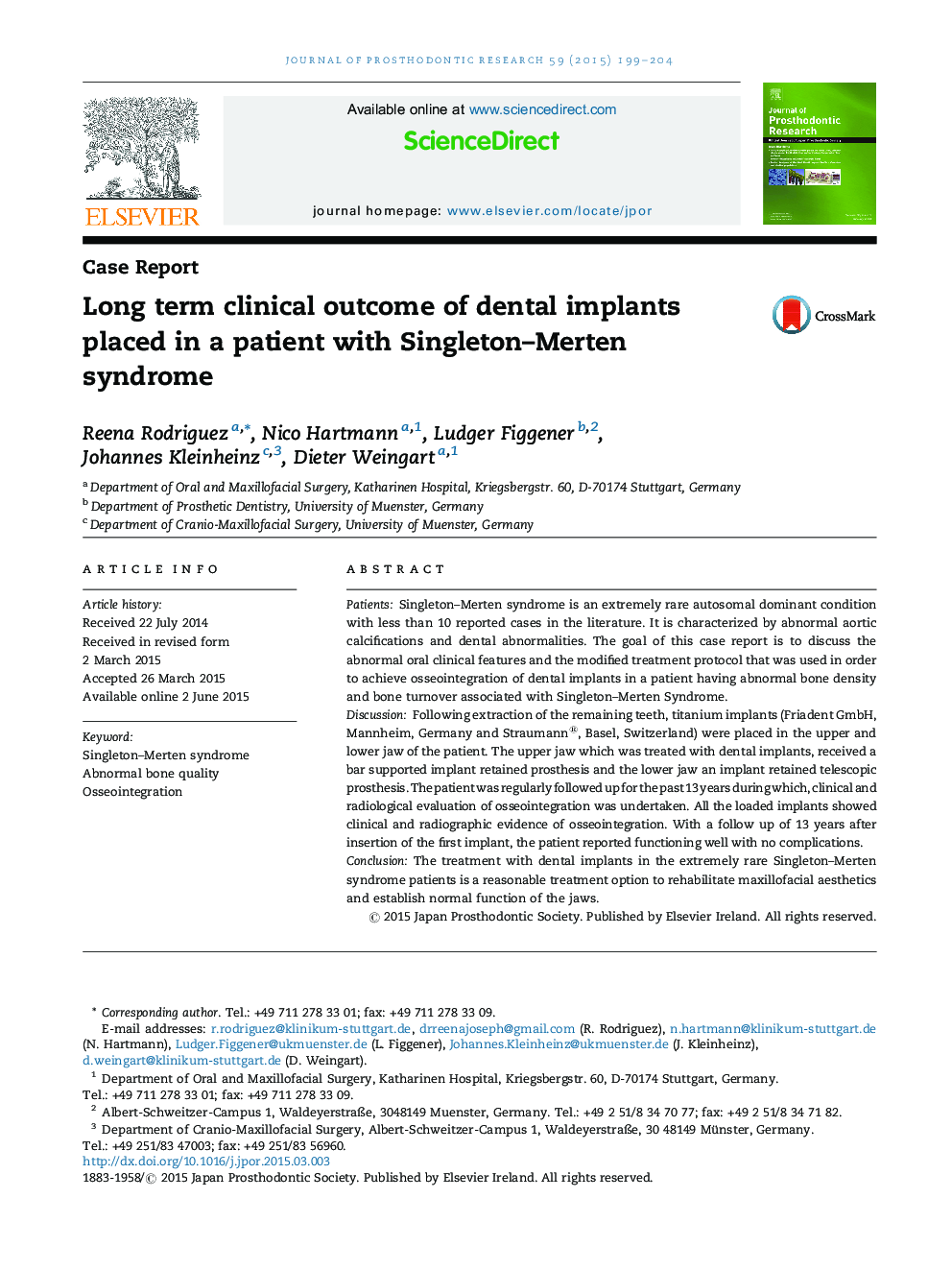| Article ID | Journal | Published Year | Pages | File Type |
|---|---|---|---|---|
| 3160658 | Journal of Prosthodontic Research | 2015 | 6 Pages |
PatientsSingleton–Merten syndrome is an extremely rare autosomal dominant condition with less than 10 reported cases in the literature. It is characterized by abnormal aortic calcifications and dental abnormalities. The goal of this case report is to discuss the abnormal oral clinical features and the modified treatment protocol that was used in order to achieve osseointegration of dental implants in a patient having abnormal bone density and bone turnover associated with Singleton–Merten Syndrome.DiscussionFollowing extraction of the remaining teeth, titanium implants (Friadent GmbH, Mannheim, Germany and Straumann®, Basel, Switzerland) were placed in the upper and lower jaw of the patient. The upper jaw which was treated with dental implants, received a bar supported implant retained prosthesis and the lower jaw an implant retained telescopic prosthesis. The patient was regularly followed up for the past 13 years during which, clinical and radiological evaluation of osseointegration was undertaken. All the loaded implants showed clinical and radiographic evidence of osseointegration. With a follow up of 13 years after insertion of the first implant, the patient reported functioning well with no complications.ConclusionThe treatment with dental implants in the extremely rare Singleton–Merten syndrome patients is a reasonable treatment option to rehabilitate maxillofacial aesthetics and establish normal function of the jaws.
